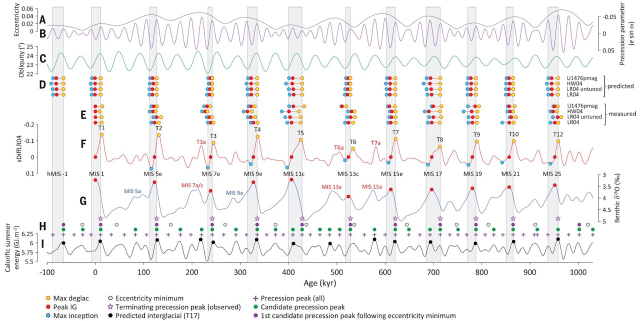Professor Lisiecki Featured in The Current

The dominant ~100-kyr period of mid- to late Pleistocene glacial cyclicity is difficult to explain because direct orbital forcing at this period (via eccentricity) is weak and constitutes one of the oldest unresolved questions in paleoclimate. New analysis presented by Lisiecki and collaborators in this study finds that ~100-kyr glacial cycles of the mid- to late Pleistocene are largely deterministic, allowing prediction of all deglacial and interglacial periods of the past 900 kyr based on orbital phasing alone.
Specifically, analysis of paleoclimate records reveals a strong correlation between deglacial duration and the phasing of precession versus obliquity during glacial terminations, with the onset of deglaciation most likely driven by peak summer intensification (i.e., precession) in combination with rising obliquity. In contrast, the timing of glacial inception depends only on a decrease in obliquity. These responses can be explained by variations in the average latitude of northern ice sheets, with inception occurring at high latitudes under the influence of obliquity, and deglaciation reflecting the dual effects of precession and obliquity across fully extended glacial ice sheets. A protracted deglaciation occurs when the responsible change in precession starts early with respect to the phase of obliquity, effectively delaying the northward retreat of ice sheets toward their interglacial state. In the absence of anthropogenic influences on climate, obliquity phasing predicts the next glacial inception would occur 7700 ± 3400 years in the future.
Finally, each of the past ten glacial terminations occurs during the first candidate precession peak (i.e., coinciding with or immediately preceding an obliquity increase) that follows a minimum in eccentricity. This is consistent with the hypothesis that eccentricity minima can enable the growth of large ice sheets by reducing the amplitude of precession.
The full article can be found here.